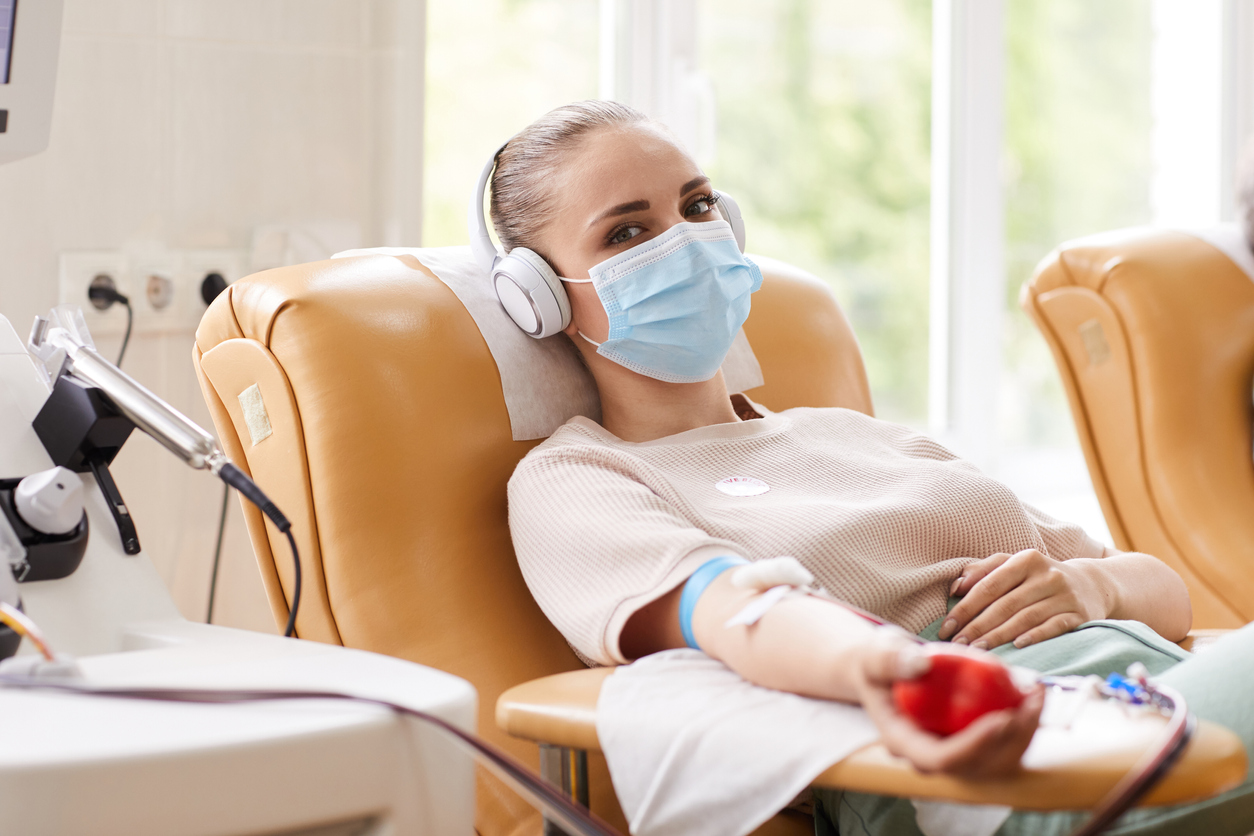
Even as the COVID-19 pandemic is the top concern in the healthcare community, people will have other reasons to seek care in a hospital: chemotherapy, trauma and accidents, childbirth. And some of those patients will need blood transfusions.
Because many safety protocols are already in place in the blood donation process, the COVID-19 pandemic does not pose an additional risk to people who choose to donate. And because blood donation is seen as an essential service, shelter-in-place and lockdowns do not prevent people from donating blood.
Is Donating Blood Safe During a Pandemic?
“COVID-19 does not pose any special risk to blood donors during the donation process, or from attending blood drives.” As with any activity at this time, if you have signs of illness – fever, chills, coughing, congestion, or gastrointestinal issues – please stay home until you feel well again. Close contact with someone who has had or currently has COVID-19 may also affect your eligibility to donate. Check with your local blood bank for their guidelines.
In addition to a regular donation process, donors who have had COVID-19 and recovered may be eligible to donate convalescent plasma.
What is Convalescent Plasma?
Convalescent plasma is plasma that can be collected from people who have recovered from COVID-19 and transfused into hospital patients with COVID-19. The antibodies present in plasma from survivors is an important treatment option for patients still struggling with the virus.
The process for collecting this plasma is the same as for regular apheresis plasma collection. During the donation process, a machine draws whole blood, retains the plasma, and returns the rest of the blood products to the donor. The process typically takes two to three hours.
We should note that clinical trials are underway to ensure the effectiveness of treatment with convalescent plasma. Because this is still an investigational treatment, the Food and Drug Administration (FDA) has issued and Emergency Use Authorization (EUA). The EUA is based on initially promising results of the treatment.
The Continued Importance of Blood Donation
It is worth reminding educators, students, and donors that blood donation is always vital to the health of the populace. The only source of blood for patients who need a transfusion is a generous blood donor. Blood cannot be made or manufactured outside of the body. A single pint of blood, which is about how much a donor gives, can help more than one patient needing a blood donation.
- Donating blood is safe. A new sterile needle is used once for each donor, then discarded.
- Face masks, gloves, and, possibly, face shields will be worn by medical personnel during a blood draw. Donors will be expected to wear face masks as well during the pandemic.
- After registration for donation, a medical history is taken.
- Blood donors get a “mini-physical”: temperature, blood pressure, and pulse are monitored, and hemoglobin is screened, to make sure the donor can give blood safely.
- The entire process of donating blood, from registration through refreshments, takes about an hour, unless you are donating plasma, as has been noted.
To support your blood donation and blood-draw scenarios, we have a variety of IV Task Trainers and simulated blood. No-Stain Blood simplifies your scenarios with easy, stain-free cleanup on clothing, skin, and most task trainers.
Sources:
FAQ on Novel Coronavirus and Blood Donation, Stanford Blood Center.
Convalescent Plasma from Recovered COVID-19 Patients, Stand\ford Blood Center
Mangine, D. "The Importance of Blood Donation," SimTalk Blog, January 18, 2018







